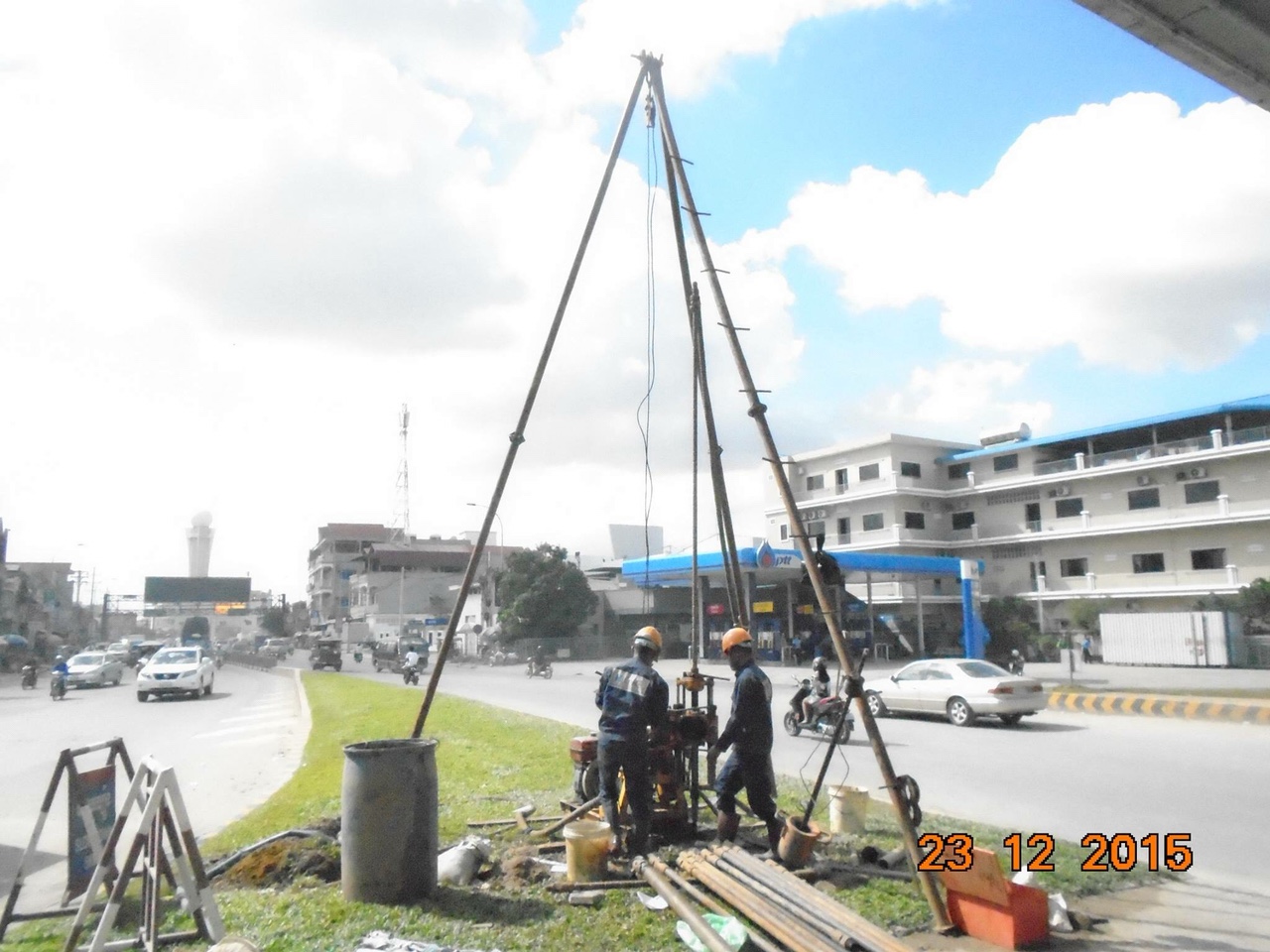Standard Penetration Test
 ASTM D1586
ASTM D1586
Standard Test Method for Penetration Test and Split-Barrel Sampling of Soil.
1. Scope:
1.1 This test method describes the procedure, generally known as the Standard Penetration Test (SPT), for driving a split-barrel sampler to obtain a representative soil sample and a measure of the resistance of the soil to penetration of the sampler.
1.2 This standard does not purport to address all of the safety problems, if any, associated with its use. It is the responsibility of the user of this standard to establish appropriate safety and health practices and determine the applicability of regulatory limitations prior to use. For a specific precautionary statement, see 5.4.1.
1.3 The values stated in inch-pound units are to be regarded as the standard.
NOTE 1—Practice D 6066 can be used when testing loose sands below the water table for liquefaction studies or when a higher level of care is required when drilling these soils. This practice provides information on drilling methods, equipment variables, energy corrections, and blow-count normalization.
2. Referenced Documents:
2.1 ASTM Standards:
D 2487 Practice for Classification of Soils for Engineering Purposes (Unified Soil Classification System)
D 2488 Practice for Description and Identification of Soils (Visual-Manual Procedure)
D 4220 Practices for Preserving and Transporting Soil Samples
D 4633 Test Method for Stress Wave Energy Measurement for Dynamic Penetrometer Testing Systems
D 6066 Practice for Determining the Normalized Penetration Resistance Testing of Sands for Evaluation of Liquefaction Potential
3. Terminology:
3.1 Definitions of Terms Specific to This Standard:
3.1.1 anvil—that portion of the drive-weight assembly which the hammer strikes and through which the hammer energy passes into the drill rods.
3.1.2 cathead—the rotating drum or windlass in the ropecathead lift system around which the operator wraps a rope to lift and drop the hammer by successively tightening and loosening the rope turns around the drum.
3.1.3 drill rods—rods used to transmit downward force and torque to the drill bit while drilling a borehole.
3.1.4 drive-weight assembly—a device consisting of the hammer, hammer fall guide, the anvil, and any hammer drop system.
3.1.5 hammer—that portion of the drive-weight assembly consisting of the 140 ± 2 lb (63.5 ± 1 kg) impact weight which is successively lifted and dropped to provide the energy that accomplishes the sampling and penetration.
3.1.6 hammer drop system—that portion of the drive-weight assembly by which the operator accomplishes the lifting and dropping of the hammer to produce the blow.
3.1.7 hammer fall guide—that part of the drive-weight assembly used to guide the fall of the hammer.
3.1.8 N-value—the blowcount representation of the penetration resistance of the soil. The N-value, reported in blows perfoot, equals the sum of the number of blows required to drive the sampler over the depth interval of 6 to 18 in. (150 to 450 mm) (see 7.3).
3.1.9 DN—the number of blows obtained from each of the 6-in. (150-mm) intervals of sampler penetration (see 7.3).
3.1.10 number of rope turns—the total contact angle between the rope and the cathead at the beginning of the operator’s rope slackening to drop the hammer, divided by 360° (see Fig. 1).
3.1.11 sampling rods—rods that connect the drive-weight assembly to the sampler. Drill rods are often used for this purpose.
3.1.12 SPT—abbreviation for standard penetration test, a term by which engineers commonly refer to this method.
4. Significance and Use:
4.1 This test method provides a soil sample for identification purposes and for laboratory tests appropriate for soil obtained from a sampler that may produce large shear strain disturbance in the sample.
4.2 This test method is used extensively in a great variety of geotechnical exploration projects. Many local correlations andwidely published correlations which relate SPT blowcount, or N-value, and the engineering behavior of earthworks and foundations are available.





















